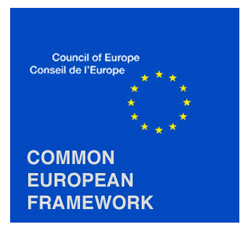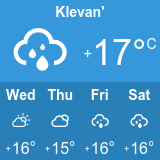
The Common European Framework of Reference for Languages: Learning, Teaching, Assessment, abbreviated as CEFR, is a guideline used to describe achievements of learners of foreign languages across Europe and, increasingly, in other countries. It was put together by the Council of Europe as the main part of the project "Language Learning for European Citizenship" between 1989 and 1996. Its main aim is to provide a method of assessing and teaching which applies to all languages in Europe. In November 2001 a European Union Council Resolution recommended using the CEFR to set up systems of validation of language ability. The six reference levels (see below) are becoming widely accepted as the European standard for grading an individual's language proficiency.
Synopsis
Chapter 1 defines the aims, objectives and functions of the proposed Framework in the light of the overall language policy of the Council of Europe and in particular the promotion of plurilingualism in response to European linguistic and cultural diversity. It then sets out the criteria which the Framework should satisfy
Chapter 2 explains the approach adopted. The descriptive scheme is based on an analysis of language use in terms of the strategies used by learners to activate general and communicative competences in order to carry out the activities and processes involved in the production and reception of texts and the construction of discourse dealing with particular themes, which enable them to fulfil the tasks facing them under the given conditions and constraints in the situations which arise in the various domains of social existence. The words underlined designate the parameters for the description of language use and the user/learner's ability to use language.
Chapter 3 introduces the common reference levels. Progress in language learning with regard to the parameters of the descriptive scheme can be calibrated in terms of a flexible series of levels of attainment defined by appropriate descriptors. This apparatus should be rich enough to accommodate the full range of learner needs and thus the objectives pursued by different providers, or required of candidates for language qualifications.
Chapter 4 establishes in some (but not exhaustive or definitive) detail the categories (scaled where possible) needed for the description of language use and the language user/learner according to the parameters identified, covering in turn: the domains and situations providing the context for language use; the themes, tasks and purposes of communication; communicative activities, strategies and processes; and text; especially in relation to activities and media.
Chapter 5 categorises in detail the user/learner's general and communicative competences, scaled where possible.
Chapter 6 considers the processes of language learning and teaching, dealing with the relation between acquisition and learning and with the nature and development of plurilingual competence, as well as with methodological options of a general or more specific kind, in relation to the categories set out in Chapters 3 & 4.
Chapter 7 examines in greater detail the role of tasks in language learning and teaching
Chapter 8 is concerned with the implications of linguistic diversification for curriculum design and considers such issues as: plurilingualism and pluriculturalism; differentiated learning objectives; principles of curriculum design; curricular scenarios; life-long language learning; modularity and partial competences.
Chapter 9 discusses the various purposes of assessment and corresponding assessment types, in the light of the need to reconcile the competing criteria of comprehensiveness, precision and operational feasibility. The General Bibliography contains a selection of books and articles which users of the Framework may wish to consult in order to go into greater depth with regard to the issues raised. The bibliography contains relevant Council of Europe documents as well as works published elsewhere.
Appendix A discusses development of descriptors of language proficiency. Methods of and criteria for, scaling and the requirements for formulating descriptors for the parameters and categories presented elsewhere. are explained.
Appendix B gives an overview of the project in Switzerland which developed and scaled the illustrative descriptors. The illustrative scales in the text are listed with page references.
Appendix C contains the descriptors for self-assessment at series of levels adopted by the DIALANG Project of the European Commission for use on the Internet.
Appendix D contains the "Can Do" descriptors at the series of levels developed by the Association of Language Testers in Europe (ALTE)
File size: 1 mb
File type: pdf in rar
 .................................
.................................
 .................................
.................................
 .................................
.................................


